How Long Do Cardinals Live? (Average Lifespan Data & Facts)
Last Updated on
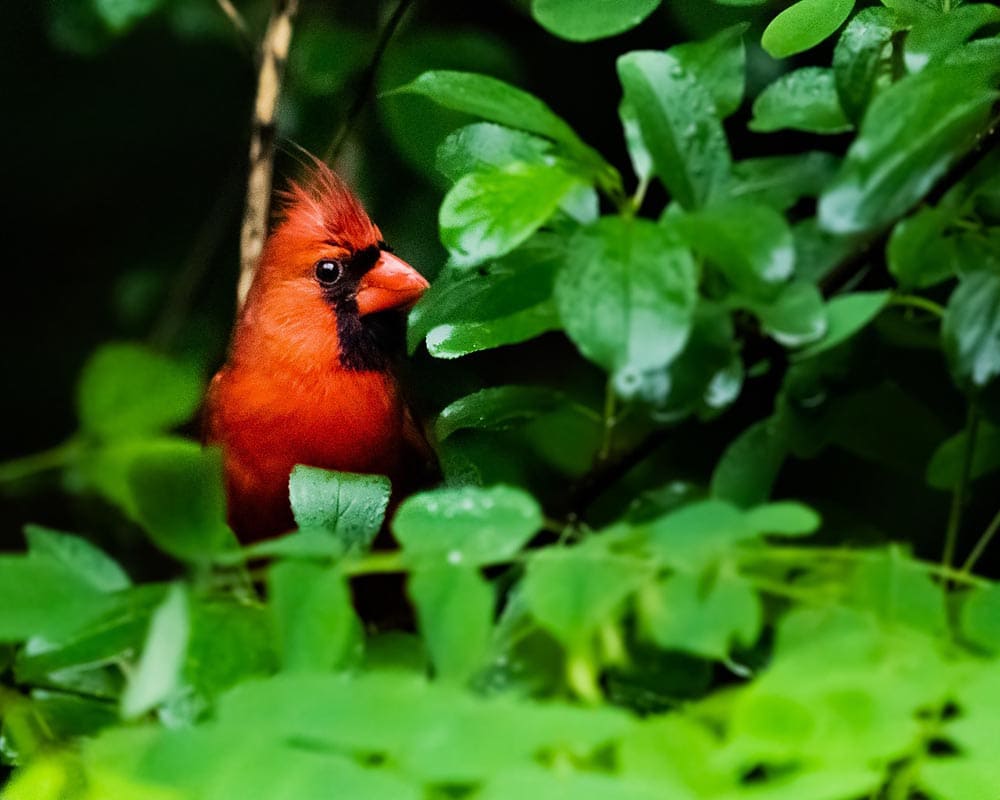
Before the Migratory Bird Treaty Act of 1918, many kept the Northern Cardinal as a pet.1 It’s easy to see why. It is a welcome visitor to any bird feeder with its showy red plumage and pretty song. It is a year-round resident in the central and eastern parts of the United States. However, its range has extended down into Mexico and Central America. There are an estimated 100 million birds worldwide.2 But how long do Cardinals live? The average lifespan of a Cardinal is about 3 years.

What’s the Average Lifespan of a Cardinal?
Bird banding data from the US Geological Survey (USGS) contains records for verifying the longevity of a species. The Northern Cardinal’s estimated yearly survival rate is up to 65%, which isn’t unusual for songbirds. However, the average age is only about 3 years. Again, it isn’t out of line for an animal that is also a prey species.
According to the USGS, the oldest confirmed bird is 15 years and 9 months for a specimen found in Pennsylvania. Scientists recorded another one from Virginia that was 15 years and 8 months old. Cardinals living in the wild face greater challenges than captive ones and, therefore, have a limited lifespan. One source reports a captive bird living for 28.5 years.
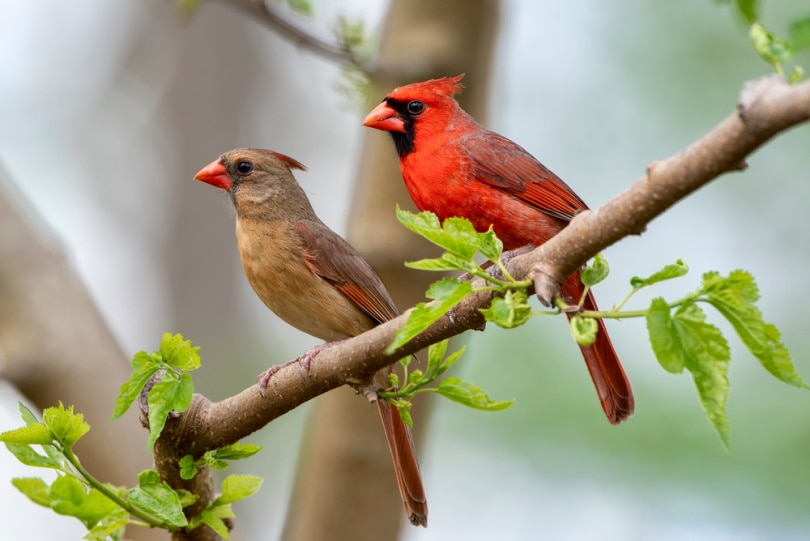
Why Do Some Cardinals Live Longer Than Others?
Several factors come into play that can explain the impressive longevity of some cardinals, much to the delight of birdwatchers. Of course, genetics has a central role in a species’ survival rate and adaptability to environmental pressures. Some changes can have a profound impact on whether a population will stand the test of time. The Northern Cardinal has several advantages on its side.
Non-Migratory Status
Migration is a stressful event for any animal that moves seasonally. The vast majority of Northern Cardinals are year-round residents. Some scientists have theorized that staying put helps the species conserve precious resources, which can have beneficial long-term impacts. Migration is physically demanding. Birds that undergo this seasonal journey often double their weight to have enough energy.
When humans don’t meet their nutritional needs, our bodies go into the so-called starvation mode. Essentially, we turn to our bodies to satisfy our needs for protein and energy. Research has shown that birds undergo a similar biological shift during migration. Northern Cardinals don’t deal with these physical changes because they are non-migratory.
Generalist Natural History
Northern Cardinals are the epitome of generalists. They live in a wide range of habitats, from forests to parks. They eat a variety of foodstuffs, including insects, fruits, and sunflower seeds. Cardinals may even resort to feeding on carrion. These behaviors give these birds an edge over species with a narrower range of habitat types or foods. Adaptability is part of their DNA.
Nest Locations
Many birds nest on the ground or other places that are easily accessible to predators, such as owls, snakes, and feral cats. Northern Cardinals often choose areas that are higher and, consequently, harder to reach. The shrub and tree species they prefer also put up additional barriers to discourage intruders. The female is solely responsible for incubation, which may give the nestlings a chance when they hatch.
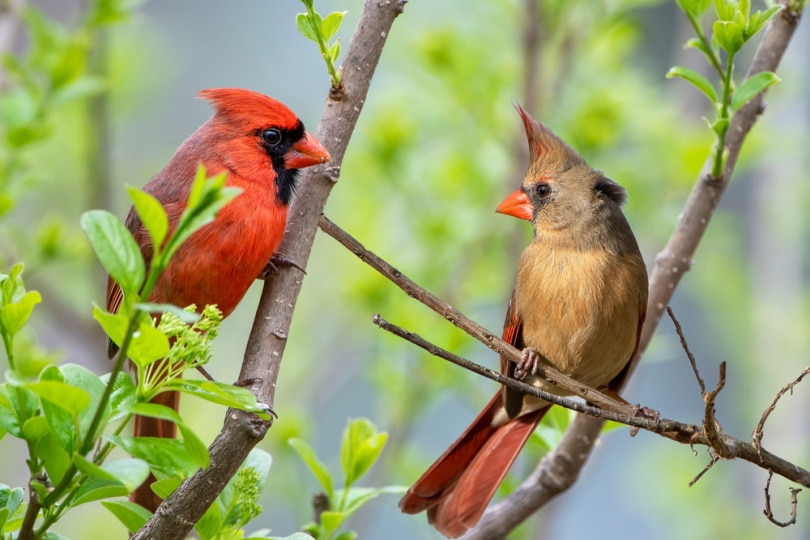
Urban versus Rural Birds
Being tolerant of humans benefits the Northern Cardinal in a surprising way. Research has shown that birds living in urban areas had more consistent patterns of reproductive success. The scientists posited that the more predictable nature of their ranges might play a role. You can take it one step further and hypothesize that fewer predators in cities also help cardinals survive.
Beloved Species
Perhaps one of the best things that the Northern Cardinal has going for it is its popularity among birdwatchers. It’s a beautiful species that many people may encourage to visit their yards with filled feeders with their favorite foods. It may help brighten the males’ colors and help ensure their reproductive success. After all, research has shown that females prefer more colorful mates.

The Five Life Stages of a Cardinal
The five life stages of a cardinal follow a similar pattern as many birds. The first ones are the most critical for survival. Since they are non-migratory, the breeding season covers a longer stretch than birds flying in from their wintering grounds. The egg comes first.
Embryonic Stage
The female may lay up to two clutches of eggs each year, with up to five each time. Incubation lasts 11–13 days. The male will feed her during this time. The color of the eggs is variable, going from green to blue to gray with brown or purple mottling.

Hatchlings
The nestlings are born with only a bit of down on them. They are altricial or completely helpless. Both parents take care of them, typically offering them high-quality protein sources like insects. Northern Cardinals fledge between 7–13 days. The young grow rapidly during this time, reaching nearly adult size in only 8 days.
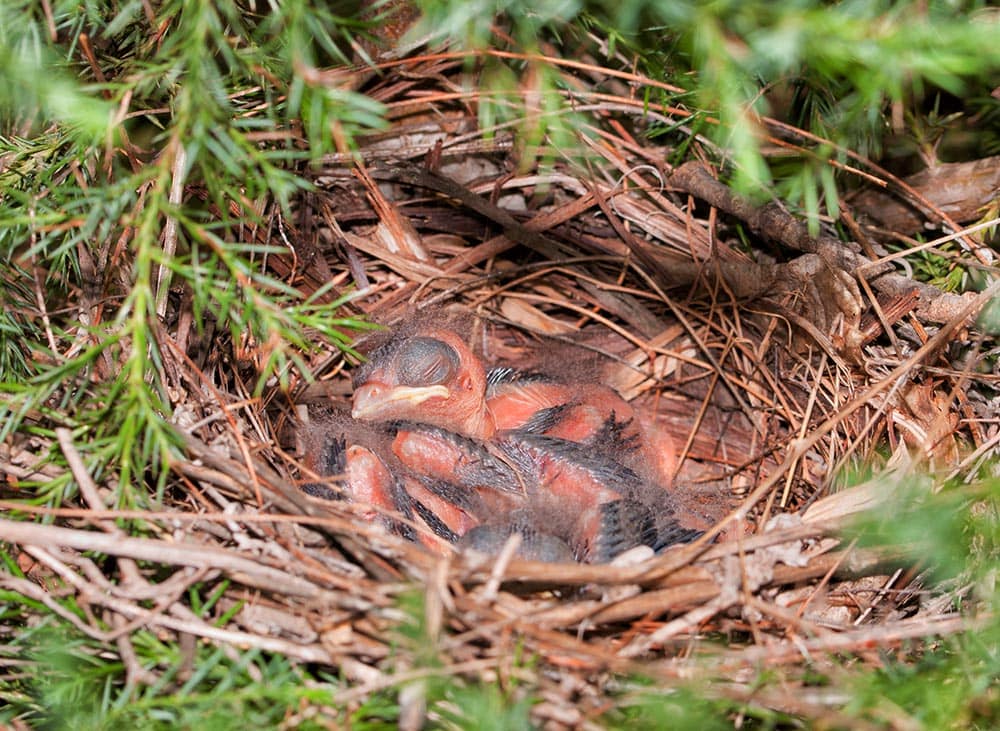
Juvenile
Crossing the bridge from hatchling to juvenile begins with the cardinal’s first ventures outside the nest, occurring around 10 days. It’s nothing short of a miracle when you compare the fledglings to their first day. The male will continue to care for them as the female starts the ritual again for the second clutch of eggs.
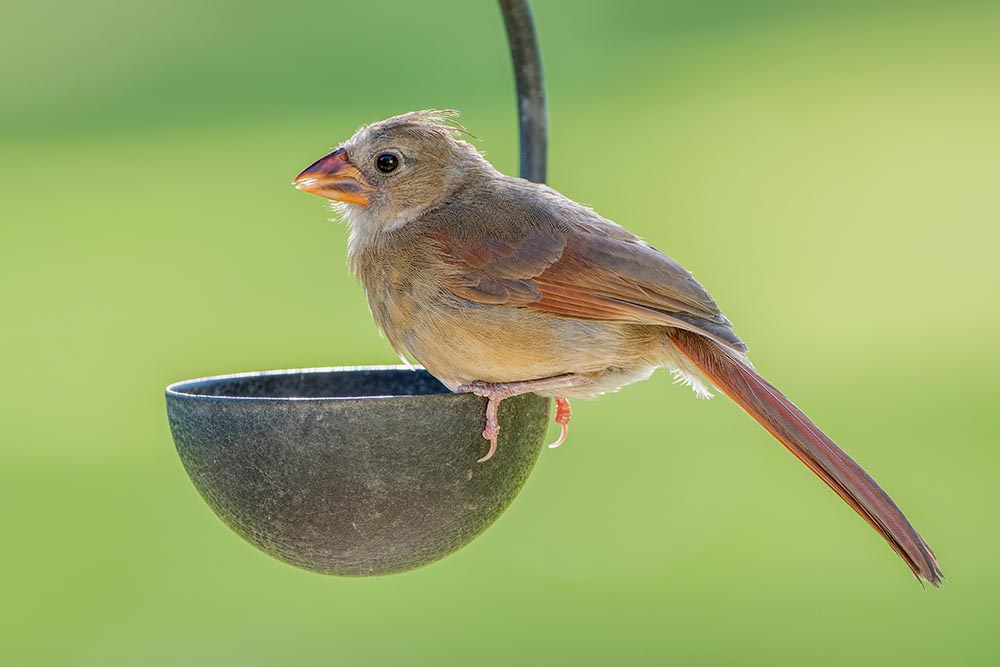
Young Adult
The fledglings will continue to grow and get stronger. They will reach independence within 56 days of hatching. If they have survived this long, they have a reasonable chance of raising their brood of nestlings the following spring.

Mature Adult
Mature Northern Cardinals are sexually dimorphic. That means the sexes have different colorations. Of course, the male has its bright red colors that make them easy to spot any time of year. The female is a drab gray, which gives her the necessary camouflage to protect her from predators, particularly when she’s in the nest. The female has some red in her crest and shares the same orange bill as the male.
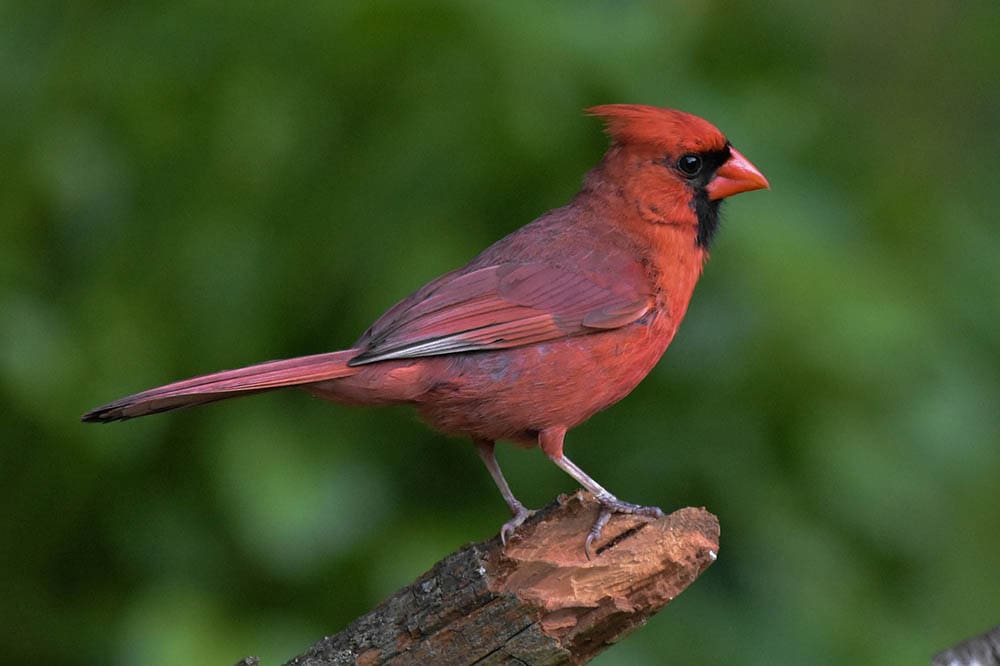
How to Tell a Cardinal’s Age
The only reliable way to age Northern Cardinals is through banding data. However, even that information is only an estimate. The best you can do otherwise is to identify juveniles from adults. Unlike warblers and other avian species, the cardinals’ colors don’t undergo seasonal variations.

Conclusion
The Northern Cardinal is a beautiful bird that may be appreciated for its lovely song and colorful plumage. Fortunately, most of us are lucky enough to see them year-round. It’s the proverbial win-win situation for birdwatchers. If you provide the food and water, they will reward you with their presence. It’s a boon for us that their bright colors last throughout the year for us to enjoy them.
Featured Image Credit: GregSabin, Pixabay
About the Author Chris Dinesen Rogers
Chris has been writing since 2009 on a variety of topics. Her motto with all of her writing is “science-based writing nurtured by education and critical thinking.” Chris specializes in science topics and has a special love for health and environmental topics, and animals of all shapes and sizes.
Related Articles:
10 Types of Hummingbirds in Arkansas (With Pictures)
8 Types of Hummingbirds in Nebraska (With Pictures)
5 Types of Hummingbirds in Idaho (With Pictures)
3 Types of Hummingbirds in Mississippi (With Pictures)
8 Types of Hummingbirds in Kansas (With Pictures)
5 Types of Hummingbirds in West Virginia (With Pictures)
5 Types of Hummingbirds in Ohio (With Pictures)
Where Do Nuthatches Nest? Nuthatch Nesting Habits Explained
